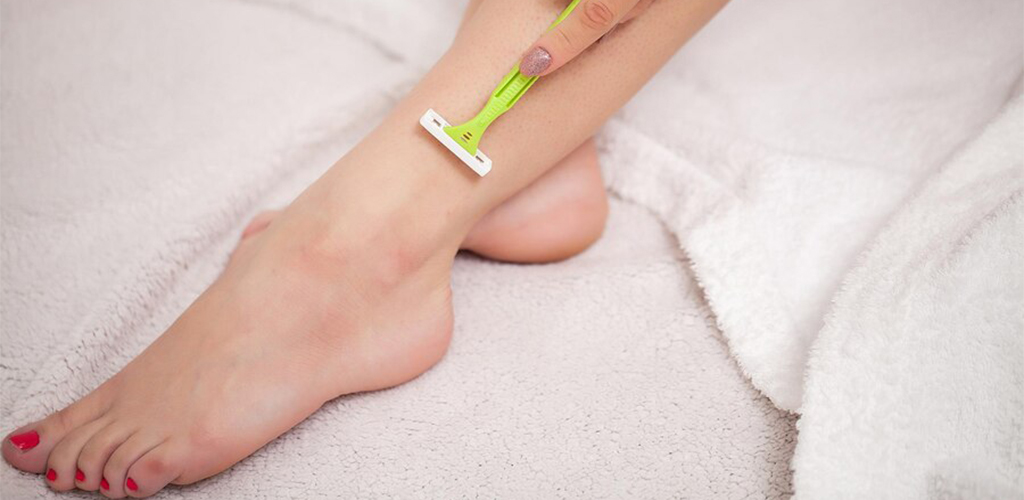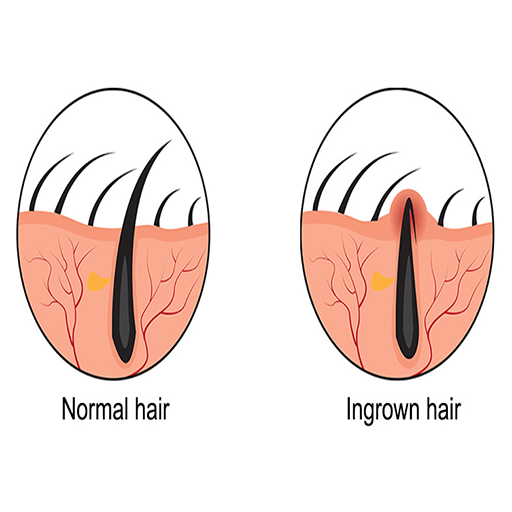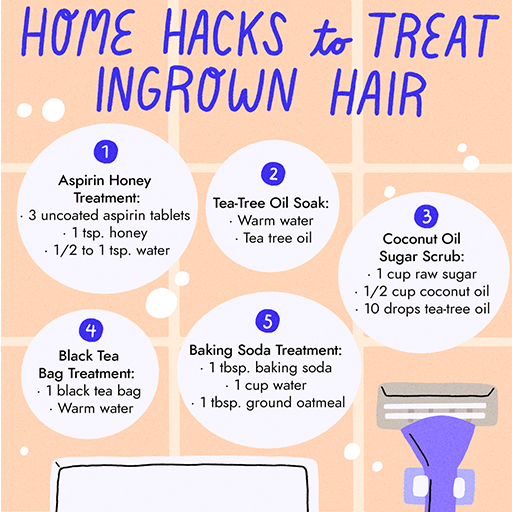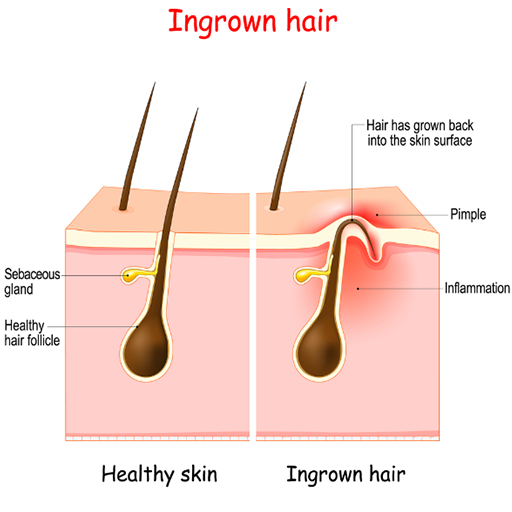Ingrown Hairs: Causes, Prevention and Treatments

What is Ingrown Hairs?
When your hair grows back into the skin rather than up to the surface, you get an ingrown hair. Ingrown hairs is most common in people who shave or wax. When the hair is cut too short, it can curl back and grow into the skin. This can cause irritation and inflammation and also lead to infection.
The development of an ingrown hair may result in the appearance of papules, which are small, rounded bumps, or pustules, which are smaller bumps that are pus-filled. However, it’s also possible that the area of skin around the ingrown hair will darken in some circumstances, which is known as hyperpigmentation.
Areas where you can find Ingrown Hairs:
Ingrown hairs are more prone to appear in places that have been shaved, waxed or thread such as:
⦁ Armpits
⦁ Legs
⦁ Neck and Face
⦁ Chest
⦁ Private parts of your body


Causes of Ingrown Hair:
The most common cause of ingrown hairs is improper shaving or waxing techniques. When the hair is cut too short or pulled out too forcefully, it can cause the hair to curl back into the skin instead of growing outward. This can lead to inflammation and irritation.
Another possible causes of ingrown hairs are:
⦁ Tweezing
⦁ Threading
How to Treat Ingrown Hair?
Usually, ingrown hairs don’t need to be treated, as they will clear up on their own without any treatment by using hair removal cream like Veet. But, if you want to treat your ingrown hairs, you may adopt one of the following techniques:
1. Stop Shaving or Waxing of that Area:
Until the ingrown hair is completely gone, you should refrain from waxing, shaving, or plucking the hair in that area. Continuing to shave the sensitive area will just make the irritation more severe. However, it is even possible that it will leave a scar or lead to a skin infection.
2. Place Warm Compresses:
Apply a warm compresses to the area for 10-15 minutes several times a day. This will help to soften the skin and make it easier for the hair to come out.
3. Gently pull out your ingrown hair:
If the ingrown hair does not come out on its own, you may need to use tweezers to carefully pull it out. However, make sure to sterilize the tweezers before use and be very gentle when pulling out the hair.
4. Exfoliation:
It is one of the most effective trick to get rid from the ingrown hairs. Gently exfoliate the affected area with a loofah or washcloth to help the hair return to the top of the skin.
5. Laser Treament:
In some cases, laser hair removal may be recommended as a long-term solution for preventing ingrown hairs in the future. However, in some severe cases, a doctor may need to remove the ingrown hair surgically. This is usually done under local anesthesia and involves making a small incision in the skin to remove the ingrown hair.
If you are still having trouble removing the ingrown hair, you may need to see a doctor for further treatment. They may prescribe antibiotics or other medications to help clear up any infection that may have developed.
How to treat Ingrown Hair at Home?
There are also some amazing home remedies that can help you get relief from hair. However, you can use over-the-counter creams or lotions that contain salicylic acid or benzoyl peroxide. These products help to exfoliate the skin and also reduces inflammation.

1. Coconut Oil and Sugar Scrub :
⦁ Mix 1/2 cup of coconut oil with 1 cup of sugar in a bowl.
⦁ Add some drops of tea tree oil in the mixture. You can use The Body Shop tea tree oil.
⦁ Apply the scrub, and then rinse it off with lukewarm water.
2. Aspirin and Honey Mask:
⦁ Take some warm water or oil in a bowl.
⦁ Mix honey and 3 crushed aspirin tablets in it.
⦁ Leave mask on for 10 – 15 minutes, then rince it off with lukewarm water.
3. Oatmeal and Baking Soda:
⦁ Mix 1 tablespoon of baking soda and 1 tablespoon of oatmeal together.
⦁ Add 1 cup water into the mixture.
⦁ Stir it until it reaches the consistency of paste.
⦁ Then apply it to the affected area with a cotton pad and leave it for 10 minutes.
⦁ At last, rinse it off with lukewarm water.
4. Tea Tree Oil:
⦁ Warm 1 cup of water and pour it into a bowl.
⦁ Mix approx 20 – 15 drops of tea tree oil in the water
⦁ Apply the mixture to the afftected area with a clean and soft washcloth.
5. Body Serum:
If you have super sensitive skin and want something to soothe it, then an oil based serum is the best option for you as compared to chemical exfoliants.
⦁ Mix hemp oil and castor oil together.
⦁ Add tea tree oil into the mixture.
⦁ After you’ve shaved, apply the mixture to help prevent inflammation.
6. Aloe Vera and Baking Soda:
⦁ Mix aloe vera gel and baking soda together in a bowl.
⦁ Apply the mixture to the afftected area and leave it for 2 to 3 minutes.
⦁ Store the rest of the formula in a jar and keep it in the fridge.
